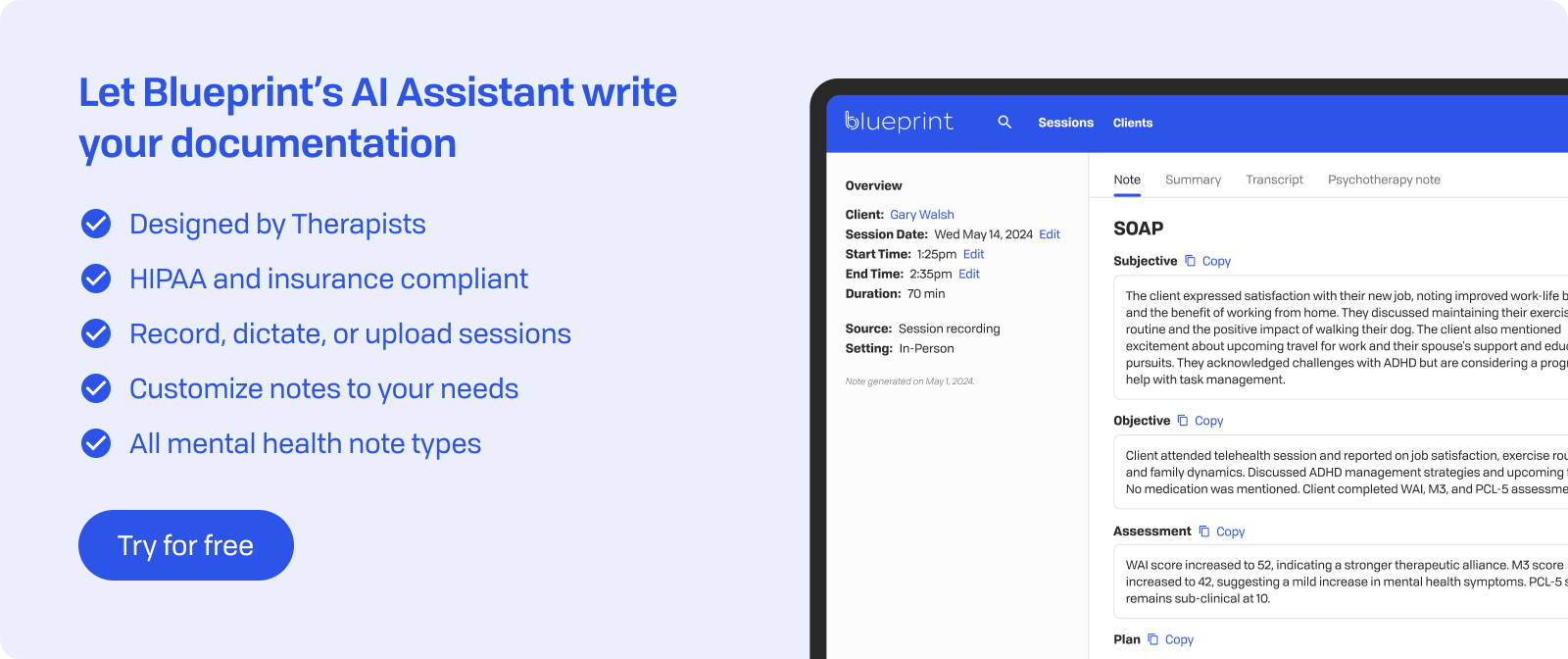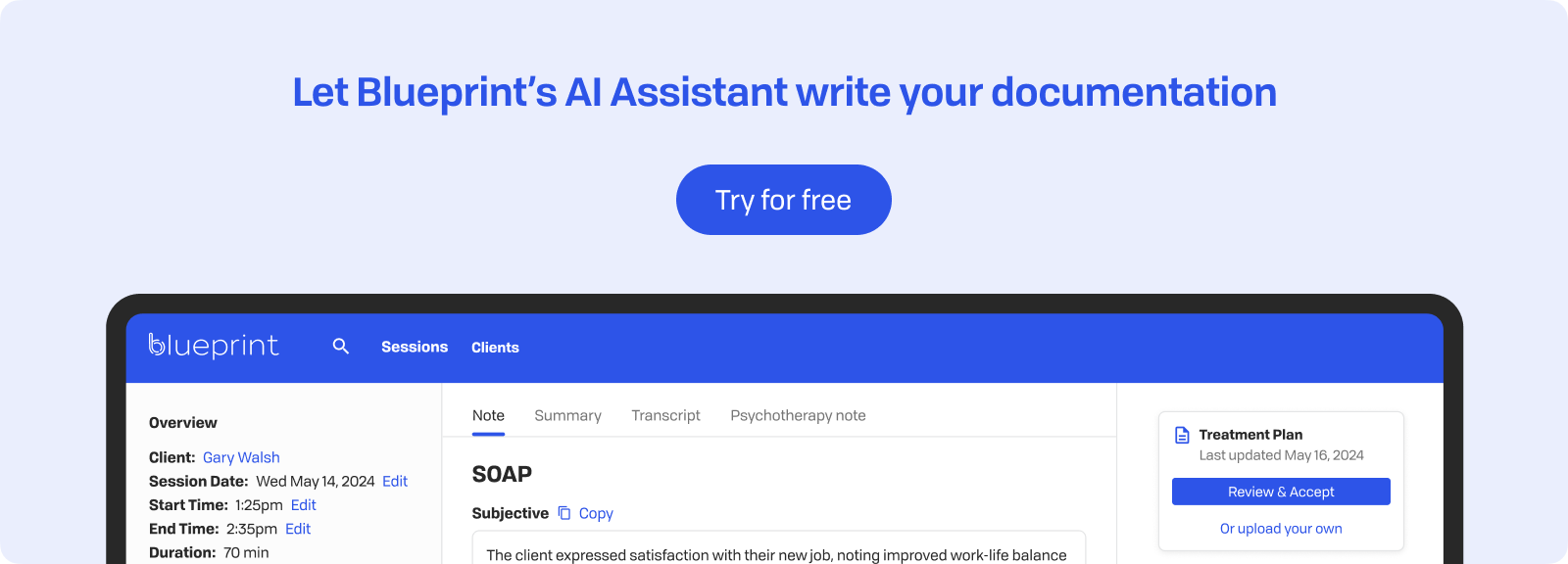In Brief
The therapeutic relationship requires a careful balance between connecting with clients' pain and maintaining professional boundaries. When therapists become too absorbed in clients' suffering, they may experience overwhelming emotional responses that hinder their effectiveness. This situation goes beyond simple emotional fatigue and presents a fundamental challenge to sustainable clinical practice.
Many therapists enter the field driven by deep compassion and a genuine desire to help others heal. Yet, this very quality can turn into a vulnerability if not managed properly. While resonating with clients' experiences is vital, without self-awareness and protective strategies, therapists can face significant personal and professional consequences.
Distinguishing between healthy therapeutic empathy and problematic emotional overwhelm is key for a sustainable career. This understanding helps clinicians recognize when their emotional responses shift from therapeutic to self-focused, identify warning signs of distress, and apply evidence-based strategies to maintain both clinical effectiveness and personal wellbeing.
Conceptual Foundations & Terminology
Empathic distress involves a self-focused, negative emotional response triggered by witnessing another's suffering. Unlike empathic concern, which motivates helpful behaviors, empathic distress creates an overwhelming need to escape or withdraw from discomfort. This distinction is critical for therapists who must stay emotionally present while maintaining professional boundaries.
Empathic concern encompasses compassion that energizes therapeutic engagement and promotes client wellbeing. Therapists who feel empathic concern remain motivated to help, maintain clear boundaries, and sustain their emotional availability throughout challenging sessions. This response supports effective intervention and strengthens the therapeutic alliance without depleting the clinician's emotional resources.
In contrast, empathic distress triggers self-oriented responses characterized by personal anxiety, overwhelm, and withdrawal tendencies. When therapists experience empathic distress, they focus more on their own discomfort rather than client needs. This shift from other-focused to self-focused attention impairs clinical judgment and reduces therapeutic effectiveness.
Recent discussions have considered redefining "compassion fatigue" as "empathic distress fatigue." This change reflects the understanding that distress, rather than compassion depletion, is the core mechanism. Compassion itself doesn't cause fatigue; rather, the inability to manage empathic distress leads to emotional exhaustion and burnout.
Different brain networks and emotional regulation systems underlie these responses. Empathic concern activates caregiving systems associated with approach behaviors and positive feelings. Empathic distress, however, triggers threat-detection systems that promote avoidance and self-protection, which are incompatible with therapeutic presence.
For therapists, recognizing these distinctions is vital for career longevity and clinical effectiveness. Over-identifying with client suffering can turn helpful empathy into harmful distress, increasing vulnerability to secondary trauma and burnout. Recognizing this allows clinicians to apply protective strategies before empathic distress affects their wellbeing or client care.
It's also important to distinguish both empathic concern and empathic distress from sympathy, which is feeling for someone. Sympathy often involves a sense of pity or distance, while empathy—in all its forms—involves a deeper cognitive or emotional resonance. In the therapeutic context, sympathy is generally seen as unhelpful because it can create a power imbalance and a sense of otherness.

Psychological & Neurobiological Foundations
The brain's structure helps explain why therapists might feel intense empathy when clients suffer. Specific circuits process both firsthand and observed pain, which can make client trauma feel very real and overwhelming.
Key brain regions involved in empathic distress include:
- Anterior Cingulate Cortex (ACC): Handles the emotional aspect of pain and distress, activating whether one is experiencing or observing suffering.
- Anterior Insula (AI): Combines bodily sensations with emotional awareness, contributing to the physical sensations of empathic distress.
- ACC-to-Periaqueductal Gray (PAG) pathway: Translates observed distress into behavioral responses like withdrawal or emotional numbing.
- Mirror neuron system: Causes automatic mirroring of others' emotional states through instinctive processing.
These brain mechanisms result in negative emotional states, including anxiety, personal distress, and physiological arousal. Unlike empathic concern, which engages caregiving circuits, empathic distress activates threat-detection systems that encourage self-protective behaviors.
Experiencing trauma early in life can make adults more prone to empathic distress. Therapists with childhood adversity often display heightened neural reactions to others' pain. Their nervous systems stay alert to distress signals, complicating emotional regulation during intense sessions. This heightened sensitivity is not a weakness but rather an adaptive response to past experiences that requires conscious management in therapeutic work.
Recognizing these neurobiological bases helps therapists understand that empathic distress involves automatic neural processes, not just emotional reactions, and requires active regulation strategies.
Identifying Signs & Clinical Impact
Spotting empathic distress early helps prevent it from affecting therapeutic effectiveness and personal well-being. Unlike typical work stress, empathic distress creates specific patterns that indicate when emotional boundaries have been compromised.
Self-report and behavioral indicators include:
- Emotional exhaustion: Feeling drained after sessions, experiencing numbness or disconnection from both clients and personal relationships
- Irritability and cynicism: Developing negative attitudes toward clients, feeling resentful about their needs, or becoming pessimistic about treatment outcomes
- Cognitive disruption: Difficulty concentrating during sessions, struggling with clinical decision-making, experiencing intrusive thoughts about client suffering
- Physical symptoms: Persistent fatigue, tension headaches, sleep disturbances, or appetite changes that coincide with particularly challenging cases
- Avoidance behaviors: Canceling sessions, arriving late, cutting sessions short, or steering conversations away from painful topics
Clinical impacts manifest as:
- Reduced attunement: Missing important clinical cues, failing to track subtle emotional shifts, or losing the thread of therapeutic conversations
- Self-protective distancing: Creating emotional barriers that prevent genuine connection, using excessive intellectualization, or maintaining rigid professional boundaries
- Diminished empathic accuracy: Misreading client emotions, projecting personal distress onto clients, or failing to differentiate between client experiences and personal reactions
- Increased countertransference: Experiencing unusually strong emotional reactions, personalizing client resistance, or feeling overwhelmed by specific client presentations
These indicators often develop gradually, making regular self-assessment a key practice. If left unaddressed, empathic distress creates vulnerability to secondary trauma and accelerates the path toward professional burnout.
It's also important to recognize that these indicators can manifest differently based on a therapist's cultural background. For example, therapists from cultures that highly value stoicism or self-sacrifice may be less likely to admit to signs like 'emotional exhaustion' or 'avoidance behaviors.' They might instead present with physical symptoms or a tendency to overwork, believing it is their duty to do so without complaint. A culturally-informed self-assessment requires therapists to consider how their own values might mask or normalize signs of distress.

Differentiating From Related Constructs
Knowing how empathic distress differs from related concepts helps therapists identify and address their specific challenges more effectively. While these terms are often used interchangeably, understanding their distinctions enables more targeted interventions.
Key differences between empathic distress and related concepts:
- Compassion fatigue: Originally described as exhaustion from caring, recent research suggests this term is misleading. Compassion itself—feeling for others with motivation to help—actually protects against burnout. What leads to fatigue is empathic distress, where therapists feel as their clients suffer, creating self-focused overwhelm.
- Secondary traumatic stress: Results from exposure to others' traumatic experiences, developing symptoms similar to PTSD. Unlike empathic distress's immediate emotional flooding, secondary trauma accumulates over time through repeated exposure to client trauma narratives.
- Vicarious trauma: Involves worldview changes and disrupted beliefs about safety, trust, and meaning after prolonged trauma work. While empathic distress creates acute emotional responses, vicarious trauma represents deeper cognitive shifts that develop gradually.
- Burnout: A broader syndrome of emotional exhaustion, depersonalization, and a reduced sense of personal accomplishment that results from chronic workplace stress. While empathic distress, secondary trauma, and vicarious trauma can all lead to burnout, burnout itself is a broader, systemic issue that can affect any professional, not just those in caregiving roles. In this context, empathic distress is often a primary pathway or an early warning sign that, if left unaddressed, can lead to the full syndrome of professional burnout
Key distinctions:
Empathic distress centers on self-focused emotional responses—feeling overwhelmed by taking on clients' pain as your own. The other constructs involve cumulative exposure effects that build over time through repeated encounters with trauma material.
Empathic distress often serves as an early warning sign. When therapists notice self-focused emotional flooding during sessions, they can intervene before it progresses to secondary trauma or broader burnout. The immediate, identifiable nature of empathic distress makes it a valuable marker for implementing protective strategies early in the process.

Mitigation Strategies for Therapists
Turning empathic distress into a sustainable therapeutic presence involves intentional practices that protect your emotional wellbeing while maintaining clinical effectiveness. The aim isn't to become emotionally detached but to develop regulated concern that benefits both therapist and client.
Move from emotional saturation to a compassionate stance:
- Practice "feeling with" rather than "feeling as": Keep in mind that client emotions belong to them, not you. This perspective allows genuine connection without becoming emotionally entangled.
- Develop witness consciousness: Observe client suffering with a caring presence while staying grounded in your professional role.
- Use grounding techniques during sessions: Notice physical sensations, breathe deeply, or mentally anchor yourself to your therapeutic framework when feeling overwhelmed.
Implement structured self-care practices:
- Boundary setting: Define clear start and end times for clinical work, limit after-hours client contact, and protect personal time for rejuvenation.
- Workload pacing: Schedule challenging clients strategically, build in transition time between sessions, and maintain realistic caseload limits.
- Reflective supervision: Regular consultation helps process difficult cases and prevents isolation with challenging emotions.
- Mindfulness practices: Daily meditation or body scans increase awareness of emotional states before they become overwhelming.
Apply cognitive monitoring tools:
- Energy check-ins: Ask yourself "How full is my cup?" throughout the day to gauge your emotional reserves.
- Focus assessment: Notice whether discomfort feels inward-focused (about your own distress) or outward-focused (concern for the client).
- Early warning system: Track physical tension, emotional numbness, or avoidance impulses as signals to engage protective strategies.
These approaches are most effective when integrated consistently rather than applied only during moments of crisis.

Integrating Insight into Clinical Supervision & Team Culture
Building a workplace culture that acknowledges and addresses empathic distress requires intentional leadership and systemic changes. When teams openly discuss emotional overwhelm, therapists feel more comfortable seeking support before reaching crisis points.
Increase awareness through supervision:
- Regular check-ins: Dedicate time in supervision to assess emotional wellbeing alongside case management
- Normalize vulnerability: Share your own experiences with empathic distress to reduce stigma
- Group reflection: Use peer supervision to explore how specific cases trigger self-focused responses
- Early warning protocols: Develop team-specific indicators that signal when colleagues need additional support
Embed preventive training:
- Onboarding education: Include empathic distress recognition in new clinician orientation
- Skill-building workshops: Offer regular training on emotional regulation techniques and self-compassion practices
- Case consultation: Structure discussions to include both clinical strategies and emotional impact processing
Implement systemic supports:
- Manageable caseloads: Monitor trauma case distribution to prevent overexposure for individual therapists
- Trauma-informed policies: Create flexible scheduling options and mandatory debrief sessions after critical incidents
- Wellness initiatives: Provide access to personal therapy, mindfulness programs, or stress reduction resources
- Rest protocols: Establish clear guidelines for taking breaks between intense sessions
Organizations that prioritize therapist wellbeing see reduced turnover, improved clinical outcomes, and stronger team cohesion. Leadership must model these practices, demonstrating that addressing empathic distress is an important part of professional development. This cultural shift transforms empathic distress from an individual struggle into a shared responsibility for maintaining a healthy therapeutic environment.
Key Takeaways
Grasping empathic distress is important for maintaining both therapeutic effectiveness and personal wellbeing. This self-focused emotional response differs fundamentally from healthy empathy—while empathic concern motivates helpful action, empathic distress creates overwhelming feelings that lead to withdrawal and self-protection.
Critical distinctions to remember:
- Empathic distress reflects inward-focused overwhelm when witnessing client suffering
- Empathic concern maintains other-focused compassion without personal flooding
- Early recognition prevents progression to burnout and secondary trauma
Left unmanaged, empathic distress can have cascading effects that compromise clinical work. Therapists experiencing this phenomenon show reduced attunement to client needs, increased emotional withdrawal, and diminished capacity for genuine therapeutic presence. The resulting dopamine depletion and motivation loss can transform passionate clinicians into exhausted professionals struggling to maintain basic therapeutic boundaries.
Protective strategies that preserve therapeutic integrity:
- Shift perspective: Move from "feeling as" to "feeling with" clients
- Monitor internal states: Regular check-ins on emotional reserves and focus direction
- Maintain boundaries: Clear session limits and protected personal time
- Seek supervision: Process challenging cases with trusted colleagues
- Practice self-compassion: Recognize empathic distress as a normal response requiring active management
Handling empathic distress effectively serves dual purposes—protecting therapist resilience while preserving the quality of client care. When therapists maintain regulated emotional presence, they create safer therapeutic environments where clients feel genuinely understood without overwhelming their clinician. This balance sustains meaningful therapeutic relationships and promotes positive treatment outcomes across all forms of practice.

How Blueprint can help streamline your workflow
Blueprint is a HIPAA-compliant AI Assistant built with therapists, for the way therapists work. Trusted by over 50,000 clinicians, Blueprint automates progress notes, drafts smart treatment plans, and surfaces actionable insights before, during, and after every client session. That means saving about 5-10 hours each week — so you have more time to focus on what matters most to you.
Try your first five sessions of Blueprint for free. No credit card required, with a 60-day money-back guarantee.
























